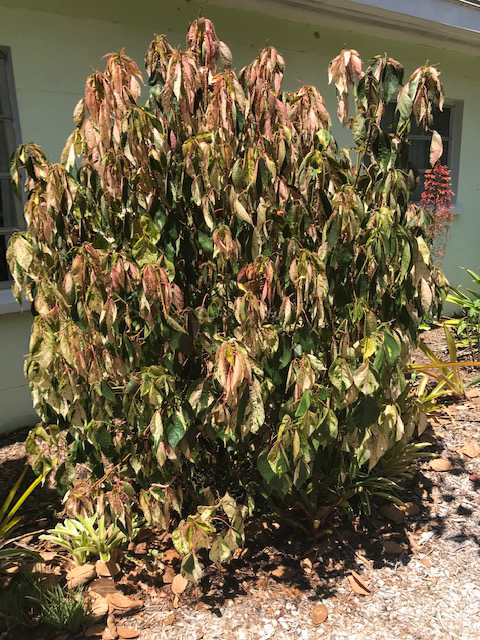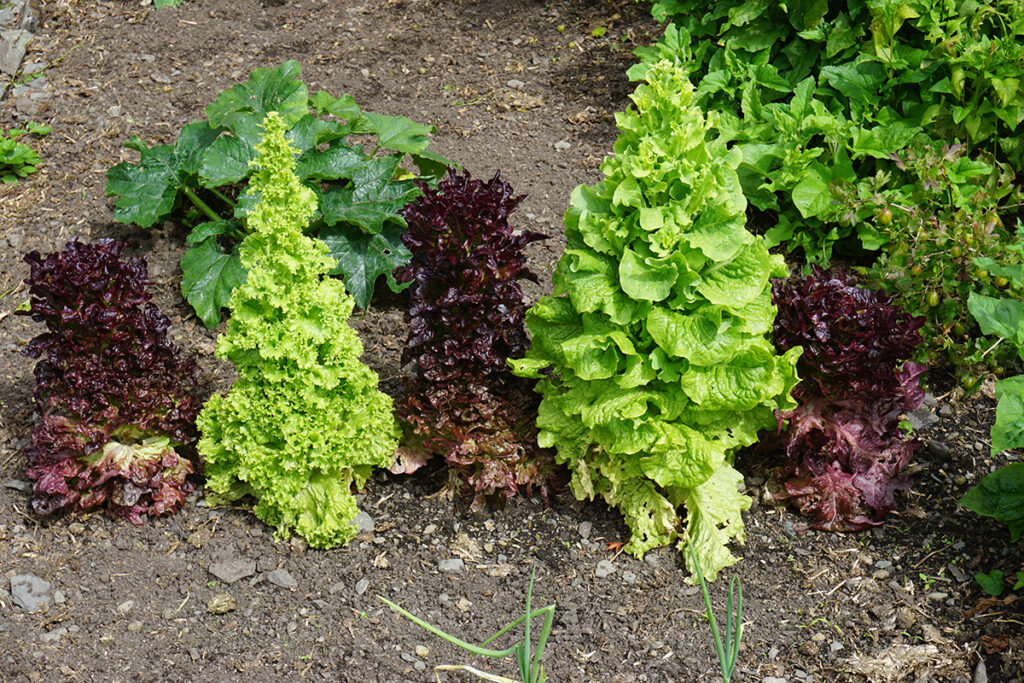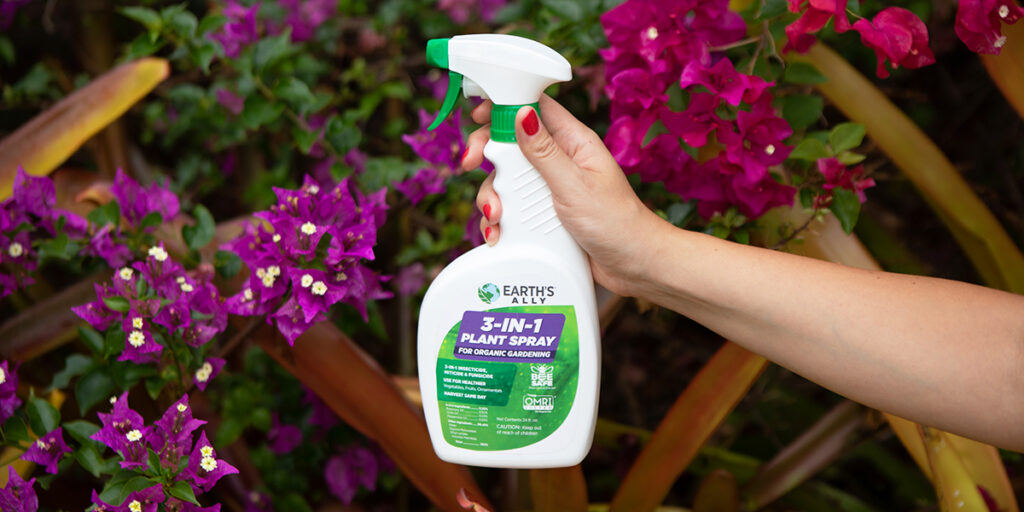
By Angelo Randaci, Earth’s Ally Horticulturist
Angelo’s passion for plants has led him to explore many areas of horticulture including research, grounds management, technical training, design and nursery management.
What can you do for your plants when the thermometer approaches 100° F? Plant growth typically slows down at 86° F and comes to a halt at temps above 100° F. As a result, plants go into survival mode during these unusual conditions. Heat stress occurs when plants are exposed to strong sunlight and heat for long periods of time. High temps for long enough to alter their ability to function or grow. The best temps for most plants are between 68° and 86° F. At temperatures above 90° F for prolonged periods, plant growth is slowed and stress may occur.
Ultimately, for gardeners, adapting to changes in climate means making changes from current gardening methods to more climate-smart practices. This article discusses some of the techniques you can do for your plants to get them through stressful conditions this summer as well as changes you can make in your plant choices in the future.
Related: 32 Ways to Promote Water Conservation in Your Garden
Signs of Plant Heat Stress
Plants display different signs of heat stress depending on plant type and maturity along with other factors such as drought conditions and high winds.

Dry Soil: Dry soil can cause heat stress. Leaves wilt as water evaporates into the atmosphere or when there is less available moisture for the plant to absorb. If plants wilt during the hottest period of the day and revive in the evening or morning there is a good chance they are experiencing heat stress.
Brown Leaf Margins: Some crops such as pumpkins and squash will exhibit dried leaf margins. This allows plants to minimize damage to the whole leaf by sacrificing the leaf’s outer edges. You may also see yellow leaves or brown spotting. Leaves may also look burned, or leaves may curl down or curl up. They may also fold inward.
Ozone Damage: High temperatures together with low air quality will damage plants by ozone. Ozone damages plants as the gas enters leaves through stomata, burning plant tissue. Damage appears differently depending on the plant. Tomatoes develop dry brown dots between leaf veins. Squash, cucumbers, and pumpkin leaves turn a pale yellow and appear dry.
Flower and Bud Drop: Plants may drop flowers and buds to conserve energy. This commonly occurs with cucumbers, peppers, and squash but can happen to any stressed plant.
Bolting: Bolting occurs when heat stress causes plants to bloom before maturing. Plants “bolt” by growing rapidly from having mostly leaves, to producing mostly flowers and seeds. This happens often to vegetables and herbs that prefer cooler temperatures. Examples include broccoli, spinach, lettuce, and cauliflower.
Plant cool-season crops in the ground as early as possible to get an early harvest before extreme heat sets in, or plant them in late summer so they grow during the cooler months of fall. Whenever possible, choose bolt-resistant and heat-resistant varieties.

Leaf Scorch: Leaf scorch is a noninfectious disorder that occurs following prolonged periods of dry, windy, and hot weather. This can happen to any tree, shrub, or herbaceous plant when the roots cannot provide water to the foliage as rapidly as it is lost from transpiration. Leaves may exhibit brown leaf margins or blotches and become dry and brittle. Leaves may drop early along with twig dieback as the season progresses.

Strategies to Prevent Plant Heat Stress
It’s not always easy or possible to help plants make it through extreme heat conditions. There are a few simple things you can do to help them along.
- Add organic matter to your soil to retain water and keep roots cool. Plants grown in fertile, well-drained soil with an adequate supply of organic matter will go into the summer season strong and healthy.
- Avoid fertilizing plants experiencing heat stress. Fertilizers, especially ones high in nitrogen, produce more green growth increasing water and nutrient needs. Without adequate water, a sudden flush of nutrients produces growth that is more susceptible to the effects of heat damage.
- Water plants in the evening or early morning to limit water evaporation during the hottest parts of the day. Avoid water loss from evaporation by using drip irrigation or a soaker hose. You can also recycle “grey” water from your bathtub or sink. Focus on any newer plantings that may still have immature root systems that will leave them vulnerable to dry soil. Water deeply so that water penetrates at least 6 inches into the soil. No need to water your plants if there is already moisture in the soil, adding more water will not help.
- Mulch with 3-4 inches with straw, pine needles, leaves, grass clippings, or compost. A good layer of mulch prevents soil from heating up and losing water to evaporation.
- Add additional shade protection with a shade cloth until the heat wave is over. Try using a patio umbrella if shading a small area. Place a shade sail or shade cloth in areas between structures such as buildings and trees. Shade cloth is available in different shade amounts and will provide 10-90% protection. A 50% shade cloth will provide about 10° F heat reduction. You can also throw dampened white sheets over your plants to lower the temperature.
- Plants in containers. When watering outdoor containers, apply water until the water exits the drainage holes. Move containers to a shady, cooler area until temperatures cool.
- Remove weeds from planting beds to avoid competition for moisture.
- Avoid transplanting or installing new plants. Wait until temperatures are cooler either in the fall or spring.
- It’s a good practice to deadhead spent blossoms. This will help them conserve energy from going to seed and encourage more flower production when temperatures moderate.
Related: Summer Water 101: Tips for Your Organic Vegetable Garden
Control Pests and Diseases with Earth’s Ally 3-in-1 Plant Spray
Plants experiencing heat stress may become more susceptible to insects and disease by weakening plants’ natural defenses. Inspect your plants regularly for any signs of powdery mildew, rust, blight, cankers, or black spot. Insects that attack your plants include aphids, scales, spider mites, thrips, and whiteflies. Earth’s Ally 3-in-1 Plant Spray will effectively control both soft-bodied insects and common plant diseases on all your plants while leaving no harmful residue. It’s perfect both for outdoor gardens as well as inside hosueplants. This product is safe for people, pets, and the planet when used as directed. For best results, follow the recommendations below:

Prior to application, make sure your plants are hydrated so you are not treating while leaves are wilted. Water affected plants thoroughly in the morning and treat later in the day when temperatures are below 90° F or water during evening hours for treatment in the early morning.
I always apply Earth’s Ally 3-in-1 Plant Spray early in the morning or evening and never during hot, sunny hours to avoid possible damage. Because some plants may be more susceptible to damage than others, I like to test a small area of the infected plant first to make sure there are no adverse reactions. I have never had damage on my plants when following these guidelines.
Related: Expert Tips for Using Earth’s Ally 3-in-1 Plant Spray
Read the entire label before using it. Shake well before and during use. This is a contact plant spray and must make contact to achieve control. Thoroughly spray leaves and stems (both upper and lower parts of the plant) until there is runoff. Repeat application every 3-5 days as necessary. You can also treat preventatively. Follow dosage recommendations on the label.
We’d love to hear how Earth’s Ally 3-in-1 Plant Spray is helping you care for your plants! Share your experience and stay connected with the #EarthsAlly community on Facebook, Instagram and Twitter for access to our latest blog posts, giveaways and exclusive promotions.
